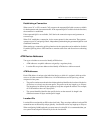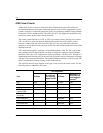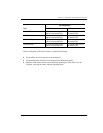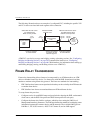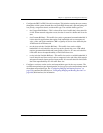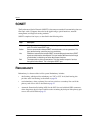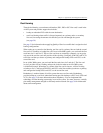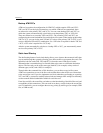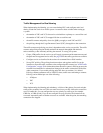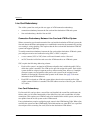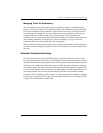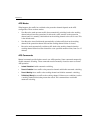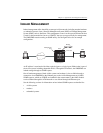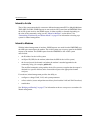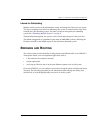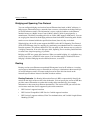
Chapter 3: Applications and Configuration Overview
Avidia System Configuration and Management User Manual 31
Traffic Management for Dual Homing
When implementing dual homing, you can create backup PVCs and configure static load
sharing to both line cards in an Avidia system. Account for these variables when setting up
asystem:
• the number of VPCs and VCCs that can be switched from a primary to a second line card
• the number of VPCs and VCCs mapped full time to each line card
• the traffic contract and quality of service (QOS) you apply to each VPC and VCC
• the policing, through the Usage Parameter Control (UPC), that applies to the connection
The traffic contract and policing you select is dependent on the service you provide. The traffic
contract and policing selection should maximize the network throughput and minimize
end-to-end delays, thus efficiently utilizing the network. To set up your system:
• Create ATM profiles for the service you will supply (upstream and downstream rates and
the QoS must be supported end-to-end). See page 20 for the traffic types that are available.
• Configure service as described in the sections for command-line or Web interface.
• Set up UPC policing. The policing function monitors and regulates traffic flow at the
interface to ensure the traffic conforms to the configured traffic contract (see “ATM Traffic
Configuration” on page 20 for information about the traffic contract). Policing protects the
network from intentional or unintentional changes in the traffic contract that could affect
other connections. If you enable policing and traffic does not conform, it is deleted.
Policing validates parameters such as VPI/VCI values, traffic rates conforming to contract.
Policing can be enabled per one of the following:
– ATM port
– VPC
– VCC
When implementing dual homing and redundancy, a failure of the primary line card switches
traffic to the secondary line card. This can result in too heavy a traffic load on the second line
card. To handle this, you can configure the recovery priority by traffic type (for example,
CBR first, rt-VBR second). If you do not configure recovery priorities, the connections are
recovered sequentially until no further resources are available. After that point, the remaining
connections are dropped.



